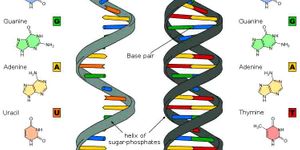
Researchers have found how a cancer-causing retrovirus RSV brings together an unexpected number of retroviral integrase proteins to grab and position the host cell and insert the virus' genetic material into it. The retrovirus’ tactic programs the cell to create more retroviruses. The scientists can use the discovery to create therapies to fight HIV-1 and retrovirus-based cancers.
Over several years, University of Minnesota researchers, along with colleagues from Cornell University and St. Louis University, figured out how to make a stable protein-DNA complex that was an ideal size for analysis. They then found how to freeze-framed it in crystalline form.
Next, they used an experimental procedure that involved beaming X-rays at the immobilized molecules. The researchers collected data on how the X-rays bounced through the crystalline structure.
Over a period of three years, the researchers analyzed the collected "X-ray-scattering" patterns to find the exact position and configuration of the immobilized molecules.
"The structure looked very different from what we anticipated," said senior study author
Hideki Aihara, an associate professor in the University of Minnesota’s Department of Biochemistry, Molecular Biology, and Biophysics. Viruses usually use a complex of four integrase molecules to grab onto a host cell’s DNA and insert its viral DNA into it. RSV uses eight integrase molecules. The maneuver programs the host cell into creating more retroviruses. Ultimately, the retrovirus sickens and/or kills the host.
The finding has the potential to “help with the development of anti-retrovirals to target the integrase functions," says Aihara. "Ultimately, we want to inhibit HIV integration, and, for that purpose, we need to know HIV intregrase's complex structure." HIV integrase is more difficult to work with than RSV integrase. Although RSV is closely related to the HIV-1 retrovirus, working directly with HIV integrase would produce results more useful for designing therapies specific to fighting HIV.
The research was published on February 18, 2016, in the journal
Nature.









